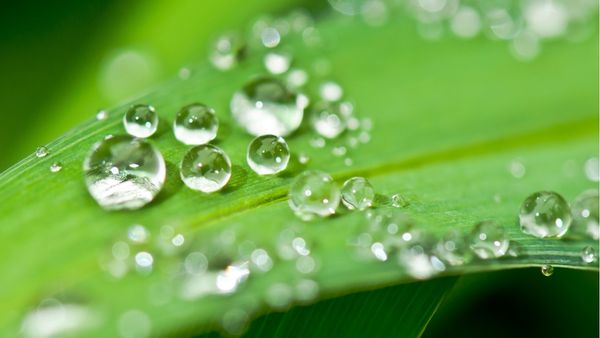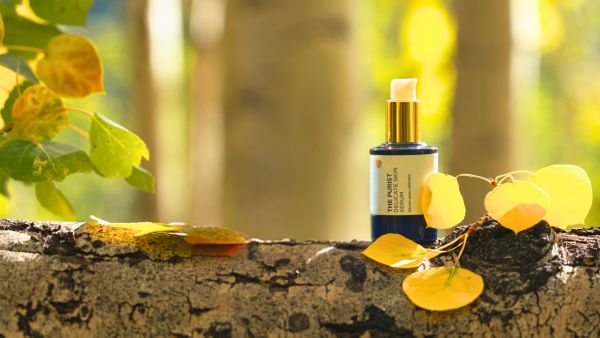What Is a Humectant?

If you’re like most, you’ve probably heard the word humectant from your dermatologist or read it in a skincare product description touting its moisturizing benefits.
But what exactly is a humectant and how exactly does it work?
This is probably not a question you’ve thought about, but you have likely considered the moisturizing properties of your skincare products. The ability of those products to moisturize your skin comes from humectants.
In this article, we will explain humectants – what they are, where you can find them, how they can benefit you, and whether they are safe. We will also tell a bit about some botanical sources of humectants.
What is a humectant?
A humectant is a substance that retains hydration. It works by pulling water from its environment and drawing it to the surface of the object on which it is placed.
In skincare terms, a humectant acts like a moisture magnet! It attracts water from the air or deeper layers of your skin and pulls it towards the surface. This helps keep your skin hydrated, plump, and supple.
Humectants are commonly found in moisturizing products such as lotions, shampoos, and skincare as well as in some foods, pesticides, and medications.
How do humectants help your skin?
Since humectants draw in moisture, they are often applied to the skin in the form of moisturizers, creams, or lotions. The humectant will draw moisture to the skin's surface from the air as well as from deeper in the skin. This helps the surface of the skin retain hydration and dry more slowly.
It’s important to note that humectants work best in humid environments. In dry climates, they can actually pull moisture from the deeper layers of the skin, potentially causing dryness.
If you live in a dry climate, look for a skincare routine that contain humectants in addition to occlusives. Occlusives form a barrier on the skin's surface, trapping moisture in and preventing humectants from drawing it out.
Products that contain humectants
A wide range of products contain humectants. They can be found in almost any product that serves to moisturize, including:
- Shampoo and conditioner
- Soap
- Lotion
- Body butter
- Eye cream
- Lip balm
- Skin cream
- Facial cleanser and moisturizer
- Face masks
- Cosmetics
- Additionally, some foods contain humectants, including cheese, marshmallows, and coconuts.
Types of botanical humectants
Several humectants come from plants. They include:
Hyaluronic acid
Hyaluronic acid is found naturally within the human body, particularly in the eyes, skin, connective tissue, and joints. It retains moisture to keep your body tissues hydrated, your eyes and joints lubricated, and your skin supple.
There are several different types of hyaluronic acid available in skincare products. These are typically characterized by weight, high, medium, and low-weight hyaluronic acids as well as hydrolyzed hyaluronic acid. The key difference lies in their molecular size, which affects how deeply each type penetrates the skin and how they perform.
Micromollecular hyaluronic acid is a key ingredient in our Aspen Dew Illuminating Essence. It dives deep into the skin's layers, delivering intense hydration directly where it's needed. This can help plump skin, smooth wrinkles, boost collagen production, and leave your skin looking refreshed and luminous.
Lower, aka smaller, molecular weight hyaluronic acid works best for mature skin.
Aloe vera
Aloe vera pulls moisture from the environment. At the same time, it creates a barrier preventing loss of moisture. Aloe vera can be used on skin or hair and is similar in chemical composition to the keratin in your hair.
Aloe vera is the first ingrient in our Aspen Dew Illuminating Essence. Most hydrating formulas have water listed as their first ingreient, and while effective, aloe vera is significantly better at providing humectant benefits to skin.
Unlike most hydrating skin essences and mists that rely on water as their first ingredient, Aspen Dew Illuminating Essence starts with the power of aloe vera. This is because aloe vera boasts superior humectant properties, drawing and retaining moisture in your skin far more effectively than water. The result? Deep hydration that leaves your skin looking radiant and feeling healthy.
Alpha hydroxy acids (AHAs)
Alpha hydroxy acids can be either naturally occurring or synthetic. They are found naturally in several foods, including citrus fruits, apples, grapes, milk, sugar cane, and tomato juice.
Different food sources produce different AHAs, but the most commonly known type is citric acid, which comes from citrus fruits. AHAs gently exfoliate the skin. Combined with its humectant properties, this can give skin a plumper look.
It's important to patch test any product containing AHAs before using it all over your face, especially if you have sensitive skin.
Apple pectin
Apple pectin is a compound found in apples. It is rich in carbohydrates, which bind with water. It also acts as a gelling agent, and because of that, it is commonly used in cosmetics, particularly in facial toners. It can also help keep the shape of pressed cosmetics, such as eyeshadow and powder.
Glycerin
Glycerin most commonly comes from vegetable oils, and like other humectants, it draws in moisture when applied to the skin. Glycerin also forms a barrier on the skin to keep moisture from evaporating as quickly. Glycerin is also compatible with other ingredients and can help them disperse through the different layers of the skin.
Urea
Urea is naturally found on your skin, though the urea in skincare products is sometimes a synthetic lab-made substance. It has exfoliating properties and reduces the buildup of dead skin cells on the surface of your skin by breaking down the keratin. Urea can also enhance the effects of other ingredients it is combined with by increasing the rate your skin absorbs them.
Coconut water
Coconut water comes from inside the coconut, either from the liquid inside or pressed from the fruit. It is very refreshing and nourishing to the skin. It is rich in vitamins, minerals, and amino acids and also contains some antioxidants.
Honey
Honey is mostly glucose and fructose. It is also rich in vitamins, minerals, enzymes, amino acids, and proteins. Honey’s benefits beyond just being a humectant are numerous. It has demonstrated antimicrobial properties and is soothing and conditioning. It also balances the skin's pH.
Pro tip: If you live in a dry climate, get the most out of your humectant by layering it with an occlusive product like our Alpine Phytonutrient Serum or a facial oil to help seal in moisture.
Are humectants safe?
Humectants in personal care, cosmetics, and foods have been studied extensively. They are generally considered safe for everyday use or consumption.
Consumers should be aware of the source of the humectant. In general, naturally derived substances are safer than lab-created ones. It is also crucial to know of any allergies to these ingredients.
For best results, apply humectant products to slightly damp skin. This allows them to draw in moisture from the environment more effectively.
You can learn more about the safety of cosmetic ingredients at the U.S. Food & Drug Administration website.
Key points on humectants
Humectants are a safe and effective way to increase your skin's hydration. They are generally made from plants and are often found in various skincare products.
To learn more about skincare products containing natural humectants, visit our website.



